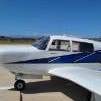Flying in the rain
-
Members Online
- TheAv8r
- rahill
- EricJ
- ta2too
- MikeOH
- Skyland
- Wingover
- Jetpilot86
- TCC
- jeremyc209
- 00-Negative
- Stubby
- kortopates
- TangoTango
- Pictreed
- 1980Mooney
- 201Mooniac
- Skates97
- Parker_Woodruff
- Mooney 231HA
- Hoeschen
- N201MKTurbo
- NickG
- Yetti
- Aaviationist
- daytonabch04
- Jft1025
- phrogpilot73
- UteM20F
- PilotX
- dkkim73
- JoeM
- richardbrochu27
- AMG880
- PT20J
- Sabremech
- A64Pilot
- ericsmsgs
- gabez
- Marcopolo
- MatthiasArnold


Recommended Posts
Join the conversation
You can post now and register later. If you have an account, sign in now to post with your account.